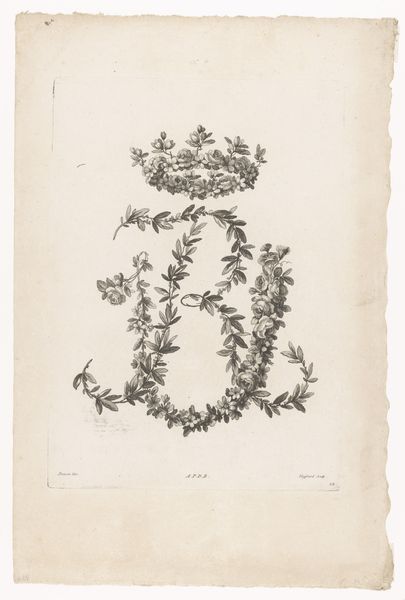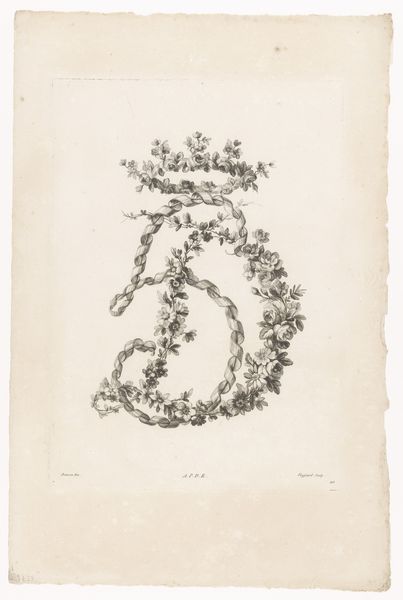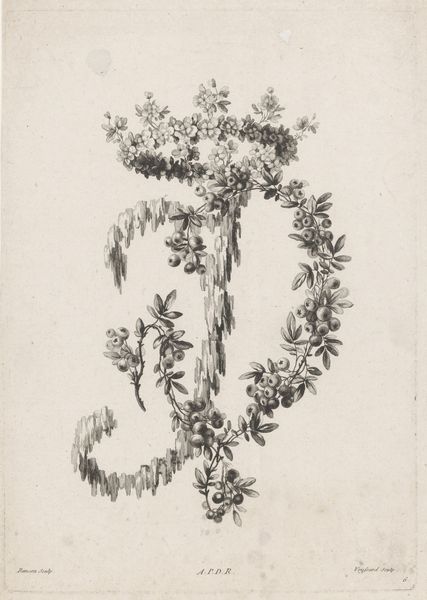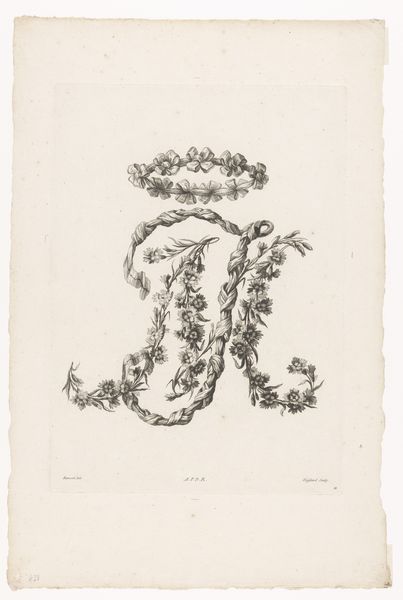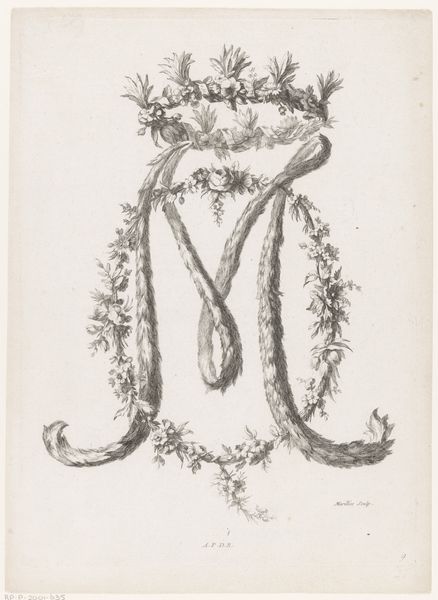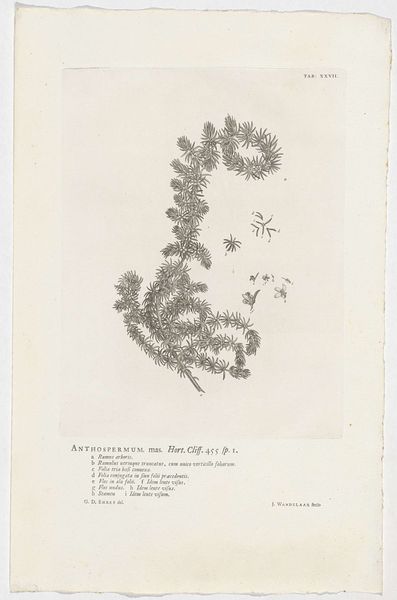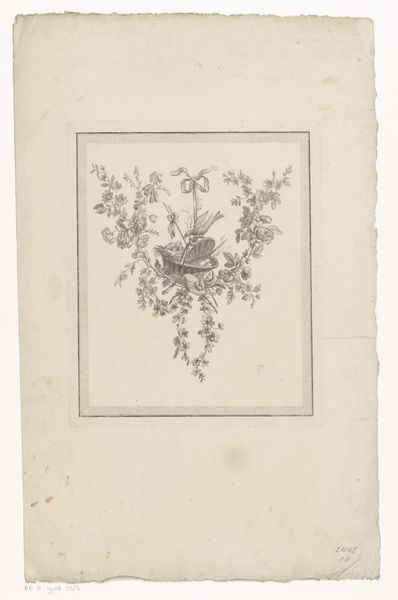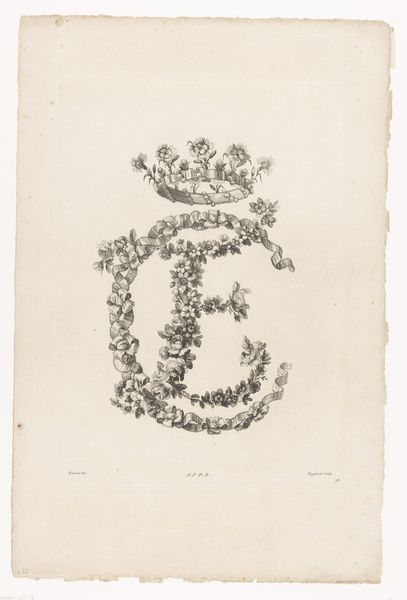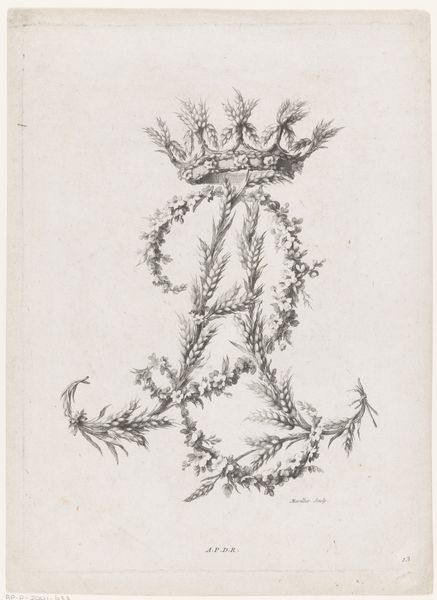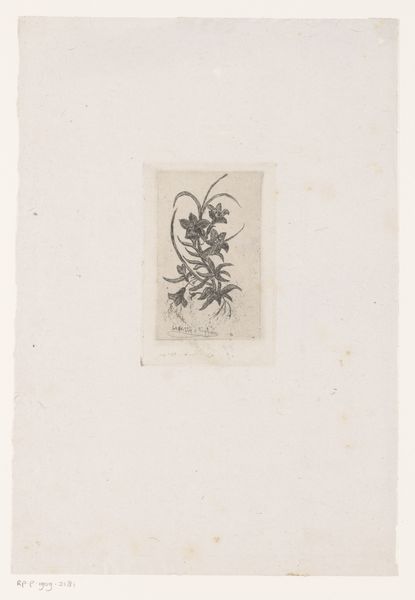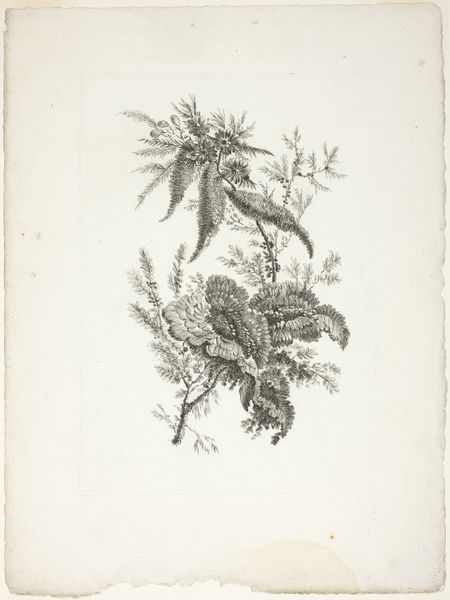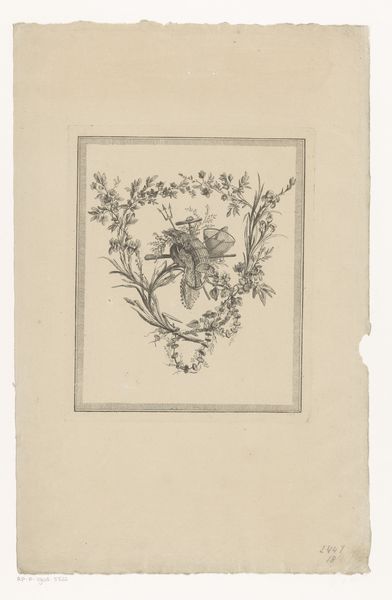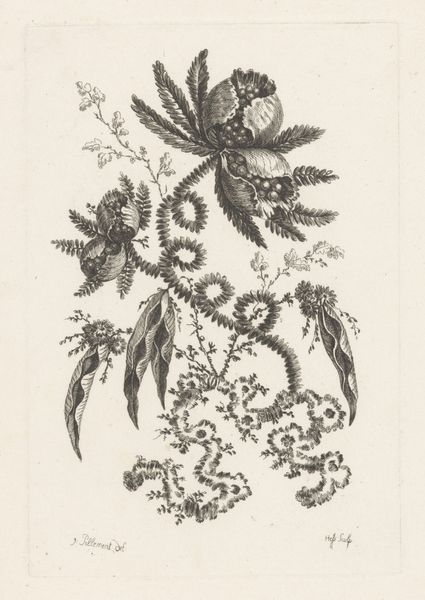
drawing, print, etching, ink
#
portrait
#
drawing
# print
#
etching
#
ink
Dimensions: height 329 mm, width 233 mm
Copyright: Rijks Museum: Open Domain
Editor: Here we have Etienne Claude Voysard's "Monogram," an etching in ink dating from somewhere between 1768 and 1786. It's a delicate rendering of what seems to be the letter "L" entwined with flowers and foliage, and topped with a crown. It has a rather romantic, ornamental feel to it. What do you see in this piece, and how does it connect with the broader art of the period? Curator: It's fascinating to consider this monogram, likely intended for personal use or a small gift, through the lens of political power. This was a period of intense social stratification and rising revolutionary sentiment. Do you see how the delicate floral design contrasts with the firm assertion of monarchical authority symbolized by the crown? Editor: Yes, I do. There’s almost a subversive fragility to the design, as if nature itself is being used to frame and perhaps question the very idea of inherited power. Curator: Precisely. Consider also the materials: etching and ink, relatively accessible and easily reproduced. What could this tell us about the artist's, or perhaps the commissioner’s, underlying beliefs about social hierarchies and dissemination of ideas? Do you think that rendering something with a monarchical symbol in a "democratic" print medium changes it? Editor: I hadn’t thought about the implications of the printing process itself. Perhaps the accessibility of print complicates the message. It's beautiful, yes, but maybe with an implicit critique embedded within its creation. Curator: Indeed. Art is rarely created in a vacuum. Examining "Monogram" through an intersectional lens of class, gender (considering floral designs were often associated with the feminine), and political power reveals much more than simply a decorative piece. What’s your perspective now? Editor: I see it as more complex now. What seemed like a simple, pretty image carries subtle layers of commentary about power, gender, and access. Curator: And that's why context is key. Voysard gives us a peek into the visual language of the period and its inherent contradictions.
Comments
No comments
Be the first to comment and join the conversation on the ultimate creative platform.
